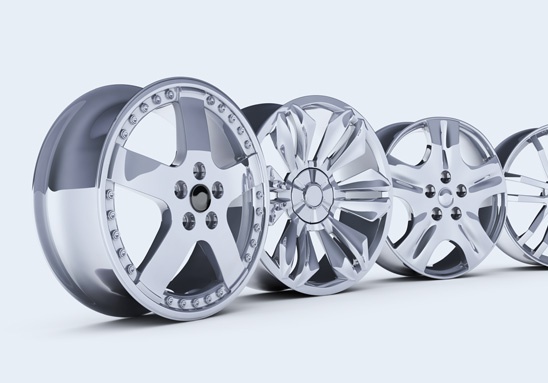Flat O-Ring Seals for Optimal Performance in Various Applications
Understanding Flat O-Ring Seals Design, Applications, and Benefits
Flat O-ring seals have gained significant prominence in various industries due to their pivotal role in ensuring leak-free performance and maintaining pressure integrity in systems. Unlike traditional circular O-rings, flat O-ring seals feature a unique design that allows for effective sealing in a wide range of applications. This article delves into the structure, advantages, uses, and maintenance of flat O-ring seals.
Design Characteristics
Flat O-ring seals are typically constructed from elastomeric materials, which provide the necessary flexibility and resilience to adapt to different mating surfaces. Their distinctive design consists of a flat profile that allows for a wide contact area. This broader surface area facilitates uniform distribution of the compressive force exerted during assembly, enhancing the seal's effectiveness. Additionally, flat O-rings can be manufactured in various sizes, thicknesses, and materials, making them versatile for many applications.
One of the most significant advantages of flat O-ring seals is their ability to create a strong barrier against liquids and gases, effectively preventing leaks. Users can select the material based on environmental conditions, such as temperature and exposure to chemicals, further tailoring the seal for specific applications.
Applications Across Industries
Flat O-ring seals are used across several sectors, including automotive, aerospace, pharmaceuticals, and food processing, among others. In the automotive industry, they are employed in engines, fuel systems, and hydraulic systems, where their sealing capabilities are critical for performance and safety. For instance, they help prevent fluid leaks in an engine, ensuring optimal operation and longevity.
In the aerospace sector, flat O-rings are utilized in hydraulic systems, fuel cells, and high-pressure assemblies. The stringent safety standards and performance requirements in this industry make these seals essential components. Their ability to perform under extreme pressure and temperature variations is key to ensuring the safety and reliability of aviation systems.
The pharmaceutical and food processing industries also rely on flat O-ring seals for their hygienic properties. These seals prevent contamination and are easily cleaned, making them suitable for applications where hygiene is paramount. Furthermore, flat O-rings can withstand aggressive cleaning agents commonly used in these industries.
flat o ring seal

Benefits of Flat O-Ring Seals
The benefits of flat O-ring seals go beyond their basic function of preventing leaks. One of the primary advantages is the ease of installation and maintenance. Because of their flat design, they can often be installed without the need for special tools or equipment. This not only speeds up the manufacturing or maintenance process but also reduces labor costs.
Moreover, flat O-ring seals are extremely durable, offering long service life under various conditions. Their ability to withstand mechanical stress, temperature fluctuations, and chemical exposure contributes to their longevity, minimizing the need for frequent replacements. This durability translates to reduced downtime in industrial settings and greater overall efficiency.
Maintenance Tips
To ensure optimal performance and longevity of flat O-ring seals, regular maintenance is recommended. Inspect seals for wear and damage regularly, particularly in high-stress applications. Environmental factors such as temperature, pressure, and exposure to chemicals can affect seal integrity, so monitoring these conditions is crucial.
When replacing flat O-rings, always choose the correct size and material for the specific application. Installing a seal that is too large or made from incompatible material can lead to leaks and systemic failures. Additionally, applying suitable lubricants during installation can help ease assembly and enhance sealing performance.
Conclusion
Flat O-ring seals are invaluable components in numerous applications, offering robust sealing solutions that are reliable and efficient. Their unique design, coupled with material versatility and durability, makes them ideal for high-stakes industries where performance and safety are paramount. As technology continues to evolve, the importance of such seals in maintaining system integrity will undoubtedly grow, further solidifying their place in engineering and manufacturing disciplines. Understanding their features and best practices for use will help industries leverage flat O-ring seals to their maximum potential.
-
Understanding the Front Main Engine Seal: Purpose, Maintenance, and Installation
News Jul.29,2025
-
Understanding O-Rings and Seal Rings: Types, Applications, and Custom Solutions
News Jul.29,2025
-
Understanding Crankshaft Oil Seals: Rear Seals, Pulley Seals, and Their Role in Engine Integrity
News Jul.29,2025
-
The Importance of Front and Rear Crankshaft Seals in Engine Performance and Oil Management
News Jul.29,2025
-
Crank Oil Seals: Functions, Types, and Cost Considerations in Engine Maintenance
News Jul.29,2025
-
A Comprehensive Guide to O-Rings and Seals: Types, Materials, and Global Applications
News Jul.29,2025
-
Mastering Diesel and Performance Engine Maintenance: A Guide to Critical Oil Gaskets
News Jul.28,2025
Products categories















